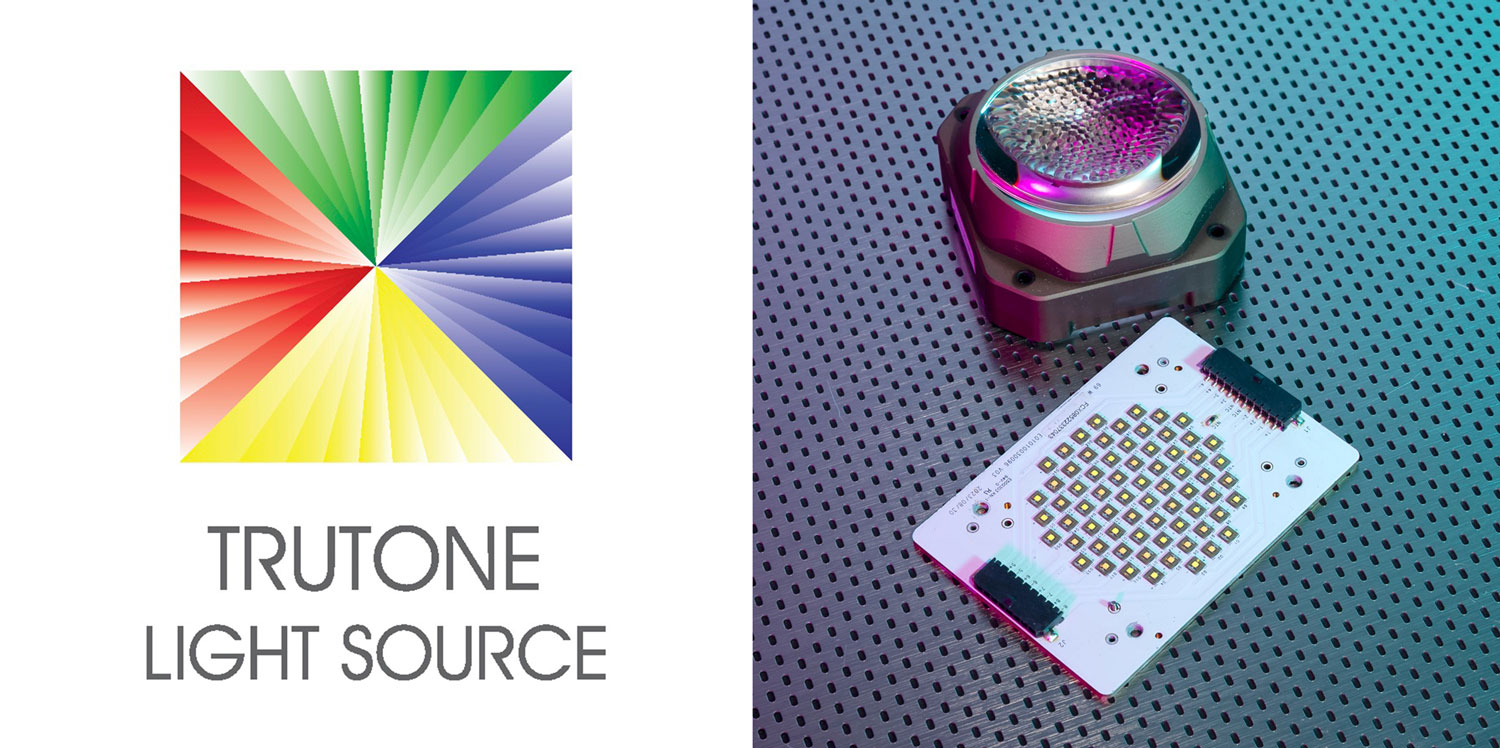Elation TruTone Technology a pioneering advancement in lighting fidelity.
Elation’s Research & Development department embarked on a development project that spanned several years to tackle the challenge of achieving the perfect balance between color accuracy and intensity. The result is TruTone Technology, a groundbreaking advancement that allows designers to adjust CRI from a single fixture in order to find the best lighting fidelity.
Achieving that perfect balance between brightness and color accuracy is an issue that has persisted in the entertainment lighting industry for years and holds significance for lighting designers and rental houses alike. Traditional LED engines, with their fixed CRI values, have fallen short in delivering a comprehensive spectrum, leaving designers and gear providers with inflexible options. Despite the industry’s numerous attempts to address this shortfall, the ideal solution has remained elusive
Elation’s Research & Development department embarked on a development project that spanned several years to tackle the challenge of achieving the perfect balance between color accuracy and intensity. The result is TruTone Technology.
TruTone
The core concept behind TruTone is ingeniously simple yet profoundly impactful: a fusion of high and low white CRI LEDs into a single, high-density optical array that allows for CRI adjustments across a range from CRI 70 to 93. The system blends light smoothly with no switching or stepping and without any visible artifacts or disruptions in color temperature. Its advantage—the flexibility to adjust color rendering in a single fixture to cater to various lighting needs while presenting a new approach to fine-tuning the tone and depth of color—makes the system wholly unique.
Limitations in previous systems
Elation Product Manager Matthias Hinrichs played a pivotal role in TruTone’s development and says the journey began with a recognition of the limitations inherent in existing lighting technologies. He states, “Because LED lights often have a low CRI of 70, with discharge lights typically around 80, the light source is not great at representing the true colors of an object, which can appear dull, or in the case of skin tones, unnatural.” He says attempts have been made to address this with glass CRI filters that reduce the green component of the source, creating a warmer and more complete spectrum. “That is fine for a rock concert and other applications but when lighting more critical environments like a fashion show, car show, television, theatre or opera for example, where the color rendering of costumes and sets is important, deficiencies in the spectrum appear.” Another CRI ‘fix’ has been through the use of multi-color additive LED engines that make it possible to choose different LED emitters to blend and compensate for the missing frequencies, a step that Matthias says achieved better results but was still not totally satisfying.
Then LED engines started to be available with a high CRI option of 90+ and manufacturers began offering high CRI versions of existing products, or even replacement engines. “But that came with a drop in performance. As the CRI increased, the LEDs became less efficient so you ended up with a fixture that was 60-70% of the original output,” Matthias explained.
For rental houses, the high CRI options meant they had to stock two different sets of fixtures, and the high CRI versions would often sit in the warehouse for long periods compared to normal CRI stock. “That’s not great for business,” Matthias stated, noting that Elation made the decision early on to forgo dual fixture versions. “On the designer side, you had to be mindful of what you specified because if you speced all high CRI fixtures, you needed 30-40% more fixtures because you didn’t have the necessary light output. That’s also not ideal.”
The core concept behind TruTone is ingeniously simple yet profoundly impactful: a fusion of high and low white CRI LEDs into a single, high-density optical array that allows for CRI adjustments across a range from CRI 70 to 93.
What if…?
It was apparent that the crux of the issue lie in the inherent trade-offs between CRI values and performance yet each solution presented its own set of compromises. Elation engineers then asked the question, What if, instead of settling for a fixed CRI value, we could offer users the ability to seamlessly adjust color rendering in a single fixture according to their needs – more horsepower or more color accuracy?
Elation R&D explored avenues for blending high and low CRI LEDs into a single, cohesive array and a breakthrough came when separate drivers and electronics for each set of CRI LEDs was tested. Matthias explains, “Independent CRI engines eliminated the hard switch and allowed us to seamlessly adjust the fixture to any CRI we wanted. Because of the efficiency differences at each CRI point, we did a lot of math and optimization to get the blend of output and color spectrum just right while making sure that the color temperature remained stable when moving between the different CRIs.”
This fluid adjustment, facilitated by sophisticated algorithms and meticulous engineering, ensures optimal performance and efficiency along the 70 to 93 CRI range. A CRI of 70 aligns perfectly with many existing fixtures like the Elation Proteus Maximus and Lucius, while a CRI of 93 is ideal for applications where color accuracy is essential like keylighting, theater, fashion, auto shows, TV/film, etc. Optimal efficiency is in the middle, at CRI 80, which is perfect for high performance
requirements.
Color influence
The more engineers looked at the system, the more they realized its advantages. “When we scrutinized it, we looked at white light on a surface, a person, a costume, and it looked great, also skin tones,” Matthias recalls. “But we quickly learned that the system has a huge influence on the color mixing system as well. It allows you to shift colors from a cold balance to a warm one and create some beautiful warm theatrical colors. It’s an adjustment in fidelity and a new way of influencing color.” In short, by changing the spectral composition of how a color is built, it gives the designer an expanded range of color variations to choose from. “When we presented the feature to theatre and television designers, they could really see its advantages and were amazed at the palettes they could create.”
Unique flexibility
Since the TruTone system enables the adjustment of CRI from a single fixture, it not only accommodates a broad spectrum of applications but also eliminates the need for multiple fixture variants to achieve precise color representation. No longer is the designer stuck with the choices he or she made in the type of LED engine. A lighting fixture can play a dual role in a single show. Whether it’s illuminating a presenter with high CRI keylight then repositioning to a rock band for full-on power looks; or illuminating a car at an auto show then repositioning onto a DJ at high output, TruTone’s seamless CRI transitioning is unique and is the only system in which this is possible.
Proteus Odeon and beyond
TruTone’s adjustable fidelity opens up a world of possibilities, allowing users to fine-tune the tone and depth of colors with unparalleled precision. Elation’s new Proteus Odeon framing profile moving head is the first lighting fixture to feature the new TruTone system, and the technology will be implemented into other Elation fixtures moving forward.
In closing, Matthias states, “TruTone has been years in the making and we’re excited to bring this new technology to the market. I think when designers see the possibilities, they will realize the real impact it can have on their designs.”




